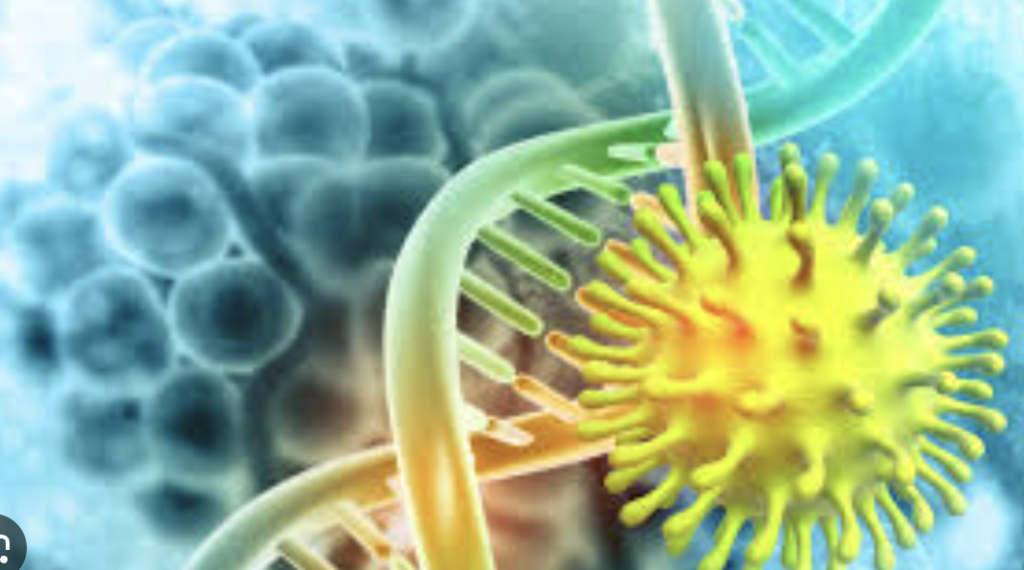In an astonishing revelation, scientists have uncovered a fascinating connection between ancient retrovirus DNA sequences and cancer growth mechanisms. This recent finding hints at a pivotal role that these ancient genetic fragments, snugly embedded in our DNA, may play in the development and progression of cancer.
The Origins: Ancient Retroviruses and Human DNA
To truly appreciate this breakthrough, we must first delve into the existence of retroviruses, specifically retrovirus DNA sequences, that have woven themselves into the fabric of our genetic code.
- Retroviruses are ancient viral invaders that integrated into the DNA of our ancestors millions of years ago.
- Throughout evolution, these viral sequences have become a permanent part of the human genome.
- One specific sequence, known as LTR10, has captured immense interest due to its potential link to cancer growth.

The Intriguing Tale of LTR10
Last year, researchers embarked on a mission to uncover the mysteries of the LTR10 sequence. This ancient retrovirus relic, lurking in our genetic code, appeared to be more than just a remnant of a bygone era.
- Studies suggest that LTR10 can influence the behavior of neighboring genes.
- This influence becomes particularly intriguing when it is linked to the regulation of genes associated with cancer.
The scientific community has long speculated that ancient viral DNA might hold secrets to modern diseases. The discovery surrounding LTR10 provides a tangible link between ancient retroviral sequences and cancer mechanisms.
The Research: Unveiling the Cancer Connection
Methodological Marvels
The team of dedicated researchers utilized advanced genomic techniques to analyze the interaction between LTR10 and genes involved in cancer. Their methods included:
- Gene sequencing: unraveling the exact location and structure of LTR10 within the human genome.
- Gene expression analysis: examining how LTR10 affects the activation and suppression of nearby genes.
- Functional assays: determining the biological impact of LTR10 on cellular processes related to cancer growth.
The results of their meticulous work provided compelling evidence that LTR10 is far from a dormant relic. It actively modulates gene expression and, in certain contexts, can contribute to the proliferation of cancerous cells.
Follow the Genes
During their research, the team identified key genes that were potentially influenced by LTR10. These genes are known to play significant roles in various cancer-related pathways, including:
- Oncogenes: genes that have the potential to cause cancer when mutated or abnormally expressed.
- Tumor suppressor genes: genes that help regulate cell growth and prevent the formation of tumors.
- Regulatory genes: genes involved in the intricate control of cell division and differentiation.
By directly linking LTR10 to the behavior of such pivotal genes, the researchers have begun to unravel the complex web of interactions that underpin cancer development.
Implications: A New Frontier in Cancer Research
This groundbreaking discovery opens a new frontier in cancer research, offering fresh perspectives on the factors contributing to the disease. Understanding the role of ancient retrovirus DNA in cancer could potentially lead to novel approaches in the diagnosis, prevention, and treatment of cancer.
- Personalized medicine: Insights gained from studying LTR10 may pave the way for more precise and individualized cancer therapies.
- Targeted treatments: Identifying how LTR10 influences specific genes could help develop targeted treatments that disrupt cancer growth mechanisms.
- Cancer prevention: Uncovering the triggers that activate LTR10 may lead to strategies for preventing certain types of cancer.

Hope on the Horizon
The prospect of harnessing knowledge from our ancient genetic past to combat one of the most challenging diseases our species faces today is undoubtedly exhilarating. Scientists worldwide are now buzzing with the possibilities that this discovery presents.
As we continue to explore the interplay between ancient retroviruses and modern diseases, the hope is that such research will spark innovative treatments and preventative measures that can significantly reduce the global burden of cancer.
A Bright Future Ahead
The identification of LTR10’s role in cancer growth mechanisms is an exciting leap forward in understanding the genetic complexities of cancer. This ancient retrovirus DNA, once thought to be a silent passenger in our genome, has revealed itself to be a potential key player in the intricate dance of life and disease.
While there is still much to uncover, the knowledge gained from this research offers a glimmer of hope. The insights gleaned from studying LTR10 could inspire future investigations and ultimately lead to breakthroughs in cancer treatment and prevention. As we peer into the depths of our genetic history, we may well find the answers to securing a healthier future for generations to come.
So, as the pursuit of knowledge continues, we remain optimistic that each discovery brings us one step closer to a world where cancer is no longer a formidable foe but a conquered challenge.